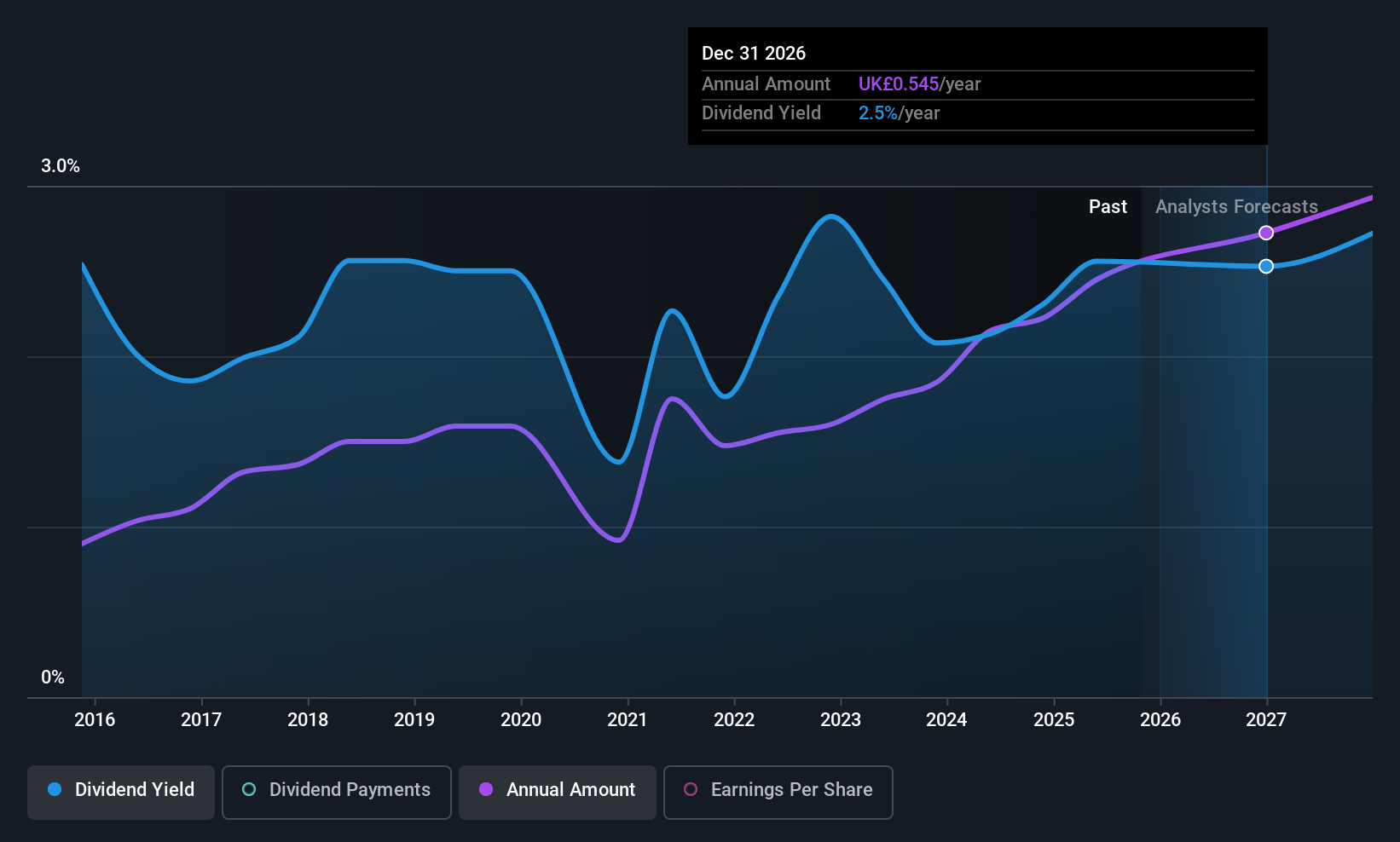Hill & Smith PLC's (LON:HILS) investors are due to receive a payment of £0.18 per share on 7th of January. Although the dividend is now higher, the yield is only 2.3%, which is below the industry average.
Hill & Smith's Payment Could Potentially Have Solid Earnings Coverage
While yield is important, another factor to consider about a company's dividend is whether the current payout levels are feasible. The last dividend was quite easily covered by Hill & Smith's earnings. This indicates that quite a large proportion of earnings is being invested back into the business.
The next year is set to see EPS grow by 39.0%. Assuming the dividend continues along recent trends, we think the payout ratio could be 39% by next year, which is in a pretty sustainable range.

View our latest analysis for Hill & Smith
Dividend Volatility
Although the company has a long dividend history, it has been cut at least once in the last 10 years. Since 2015, the dividend has gone from £0.164 total annually to £0.49. This implies that the company grew its distributions at a yearly rate of about 12% over that duration. Despite the rapid growth in the dividend over the past number of years, we have seen the payments go down the past as well, so that makes us cautious.
The Dividend Looks Likely To Grow
Growing earnings per share could be a mitigating factor when considering the past fluctuations in the dividend. It's encouraging to see that Hill & Smith has been growing its earnings per share at 17% a year over the past five years. Earnings are on the uptrend, and it is only paying a small portion of those earnings to shareholders.
Hill & Smith Looks Like A Great Dividend Stock
In summary, it is always positive to see the dividend being increased, and we are particularly pleased with its overall sustainability. Distributions are quite easily covered by earnings, which are also being converted to cash flows. All of these factors considered, we think this has solid potential as a dividend stock.
Market movements attest to how highly valued a consistent dividend policy is compared to one which is more unpredictable. Still, investors need to consider a host of other factors, apart from dividend payments, when analysing a company. For example, we've picked out 1 warning sign for Hill & Smith that investors should know about before committing capital to this stock. Is Hill & Smith not quite the opportunity you were looking for? Why not check out our selection of top dividend stocks.
Valuation is complex, but we're here to simplify it.
Discover if Hill & Smith might be undervalued or overvalued with our detailed analysis, featuring fair value estimates, potential risks, dividends, insider trades, and its financial condition.
Access Free AnalysisHave feedback on this article? Concerned about the content? Get in touch with us directly. Alternatively, email editorial-team (at) simplywallst.com.
This article by Simply Wall St is general in nature. We provide commentary based on historical data and analyst forecasts only using an unbiased methodology and our articles are not intended to be financial advice. It does not constitute a recommendation to buy or sell any stock, and does not take account of your objectives, or your financial situation. We aim to bring you long-term focused analysis driven by fundamental data. Note that our analysis may not factor in the latest price-sensitive company announcements or qualitative material. Simply Wall St has no position in any stocks mentioned.
About LSE:HILS
Hill & Smith
Manufactures and supplies infrastructure products in the United Kingdom, rest of Europe, North America, the Middle East, rest of Asia, and internationally.
Flawless balance sheet average dividend payer.
Market Insights
Community Narratives



